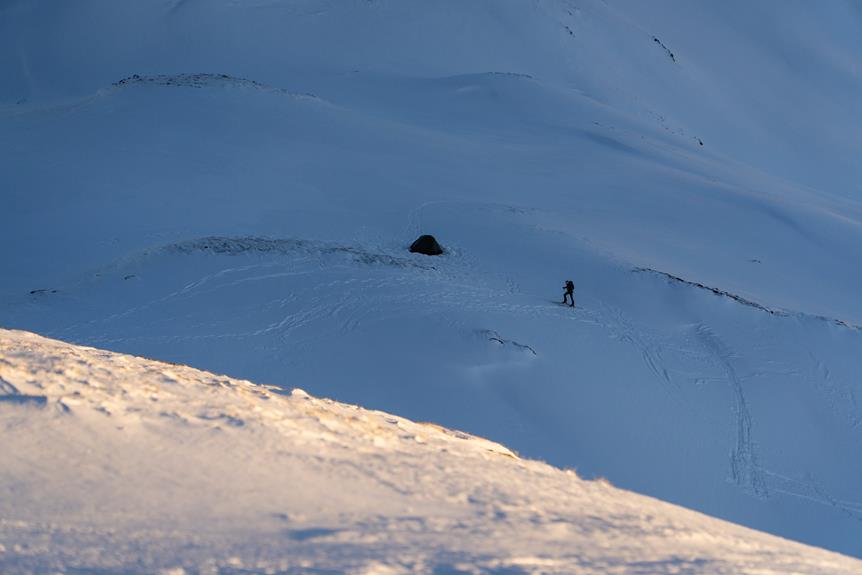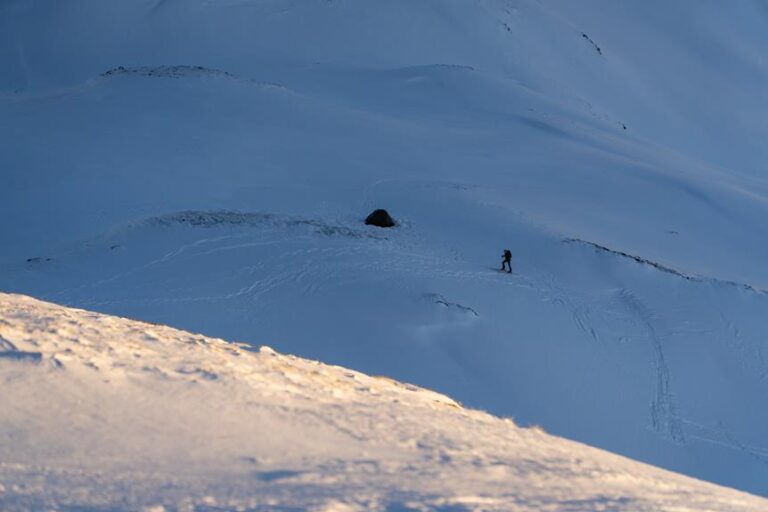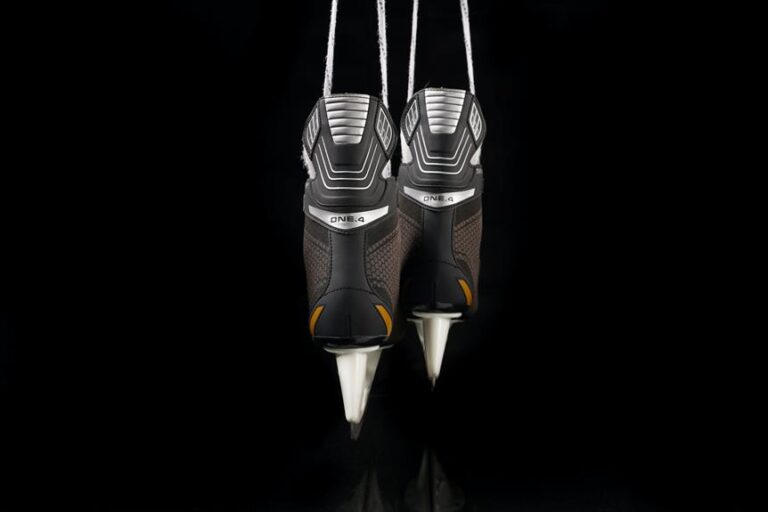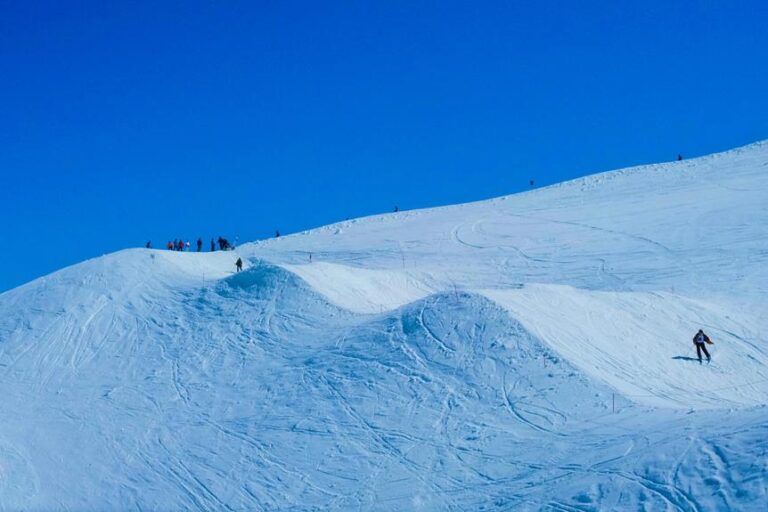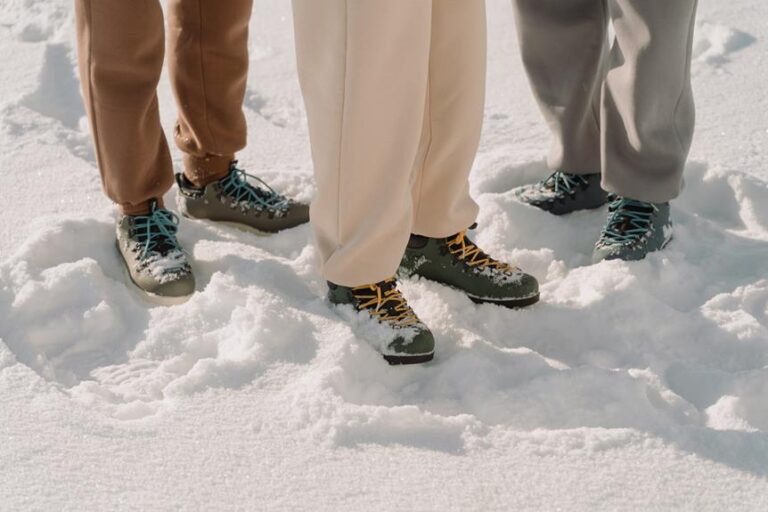How to Stop While Skiing – 2024 Edition
Did you know that according to a study conducted by the National Ski Areas Association, 90% of ski accidents happen when skiers are unable to stop properly? It's a crucial skill to learn if you want to stay safe on the slopes.
So, how exactly can you stop while skiing? In this discussion, we will explore some effective techniques that will help you slow down and come to a controlled stop. Whether you're a beginner or an advanced skier, these techniques will ensure that you have the necessary skills to navigate the slopes safely.
So, let's dive in and discover the secrets to stopping while skiing!
The Snowplow Technique
The Snowplow technique is the first technique beginners are taught in skiing, and it involves forming a triangle with your skis to slow down by pushing the outer edges out while turning the front tips in. This technique is essential for beginners to learn because it allows you to control your speed and come to a stop safely on the slope.
When executing the Snowplow, make sure your skis are parallel and slightly wider than hip-width apart. To slow down, push the outer edges of your skis outwards while simultaneously turning the front tips of your skis inwards. This action creates resistance against the snow, which helps you to decelerate.
It's important to remember to maintain balance and avoid crossing your skis, as this can cause you to lose control and potentially fall. The Snowplow technique is particularly effective on gentle slopes, but it may not be suitable for quick stops.
With practice and proper instruction, you'll be able to master the Snowplow technique and confidently stop while skiing.
The Turning Technique
To progress from the Snowplow technique to the Turning technique, you'll need to shift your body weight to the outside ski and coordinate your movements to initiate a turn. Mastering this technique will allow you to control your speed and direction while skiing, giving you the ability to navigate the slopes confidently.
Here are three key points to keep in mind when practicing the Turning technique:
- Start on gentle terrain: Find a slope that isn't too steep to practice turning. This will allow you to focus on the technique without feeling overwhelmed. As you gain confidence, you can gradually move on to steeper slopes.
- Coordinate your movements: To initiate a turn, try turning both skis simultaneously. Shift your body weight to the outside ski and press down on the inside edge. This will help you carve smoothly through the snow and maintain control.
- Keep your skis parallel: Unlike the Snowplow or wedge stop, where your skis are in a V shape, the Turning technique requires you to keep your skis parallel. This allows for a more efficient turn and better edge control. Remember to keep your body perpendicular to the slope, facing downhill.
The Hockey Stop
When stopping suddenly while skiing, an advanced technique to master is the Hockey Stop. This technique allows you to come to a quick stop while maintaining control on the slope.
To perform the Hockey Stop, start skiing downhill and focus on weighting your left ski first. Then, swiftly rotate both skis completely to the right, keeping them parallel to each other. It's important to bend your knees and keep your weight over your left ski to maintain balance throughout the stop.
To execute the Hockey Stop effectively, practice turning from your feet instead of your upper body. This will allow for better control and stability. If you're struggling to master the Hockey Stop, seek guidance from a professional instructor who can provide helpful tips and techniques.
Remember to take your time and practice regularly to build confidence and improve your ability to stop quickly while skiing.
The Sideslip Technique
Mastering the Hockey Stop technique can pave the way for learning another essential skill on the slopes: the Sideslip Technique. Knowing how to stop is crucial for your safety, and the Sideslip Technique is a versatile method that allows you to control your speed and navigate tricky terrain.
Here are three key steps to master the Sideslip Technique:
- Keep your skis closer together: Begin by facing across the slope with your skis parallel. To execute the sideslip, it's important to keep your skis close together. This will provide stability and control as you slide down the slope.
- Keep your skis flat: Shift your weight slightly to the downhill ski and flatten it against the snow. This will help maintain balance and prevent the skis from catching on the surface. By keeping your skis flat, you'll be able to smoothly slide downhill.
- Use your downhill ski edge: While keeping slight pressure on the downhill ski, gently lift the uphill ski's edge to allow it to slide downhill. By adjusting the pressure on each ski, you can control your speed and maintain a smooth sideslip. Gradually increasing the angle of your skis to the slope will increase the sideslip and decrease speed.
Experienced skiers rely on the Sideslip Technique for various situations, such as navigating narrow trails or controlling speed on steep slopes. By mastering this technique, you'll have another valuable tool in your arsenal for ski stopping and staying in control on the slopes.
Advanced Stopping Techniques
Utilize advanced stopping techniques to enhance your skiing skills and maintain control on the slopes.
When it comes to controlling your speed and stopping, there are several techniques you can employ. The snow plow is a classic technique that involves turning your skis into a wedge shape by pushing the tips of your skis outwards. This technique is especially useful on gentle slopes.
However, when tackling steeper slopes, you'll need more advanced techniques. One technique is the hockey stop, where you rotate both skis parallel to each other and shift your weight over the downhill ski. This allows you to come to a complete stop quickly.
Another technique you can try is parallel skiing, where you keep your weight centered and turn your skis in the same direction to slow down and stop. Remember to always keep your weight forward, your shoulders facing downhill, and your hands in front of you for better control.
Frequently Asked Questions
What Is Best Way to Stop When Skiing?
To stop effectively while skiing, slow down on steep slopes by using snowplow turns and mastering the hockey stop technique. Practice controlled carving and utilize the wedge turn for braking. Manage speed on icy terrain and learn how to stop safely on moguls. Tips for stopping on variable snow conditions.
How Do You Brake on Skiing?
To brake while skiing, master the snowplow technique for effective stopping. Maintain control by using ski edges, distributing your weight, and applying pressure to slow down. Practice controlled turns and eventually master the advanced hockey stop.
How Do I Stop My Ski?
To stop your ski, use proper skiing techniques and apply pressure to the edges. It's crucial for skiing safety to choose the right equipment and be aware of skiing etiquette. Remember, practice makes perfect!
How Do You Stay in Control When Skiing?
To stay in control while skiing, focus on speed management, body positioning, and edge control. Use pole planting techniques, snowplow turns, and carving techniques for control. Practice the hockey stop, distribute your weight properly, and master the parallel turn to stop on steep slopes.
Conclusion
In conclusion, mastering the techniques of stopping while skiing is essential for a safe and enjoyable experience on the slopes. By learning the snowplow, turning, and hockey stop techniques, you can effectively control your speed and come to a stop when needed.
Remember to prioritize safety and practice these techniques regularly to build your skills and confidence on the mountain. Happy skiing!
